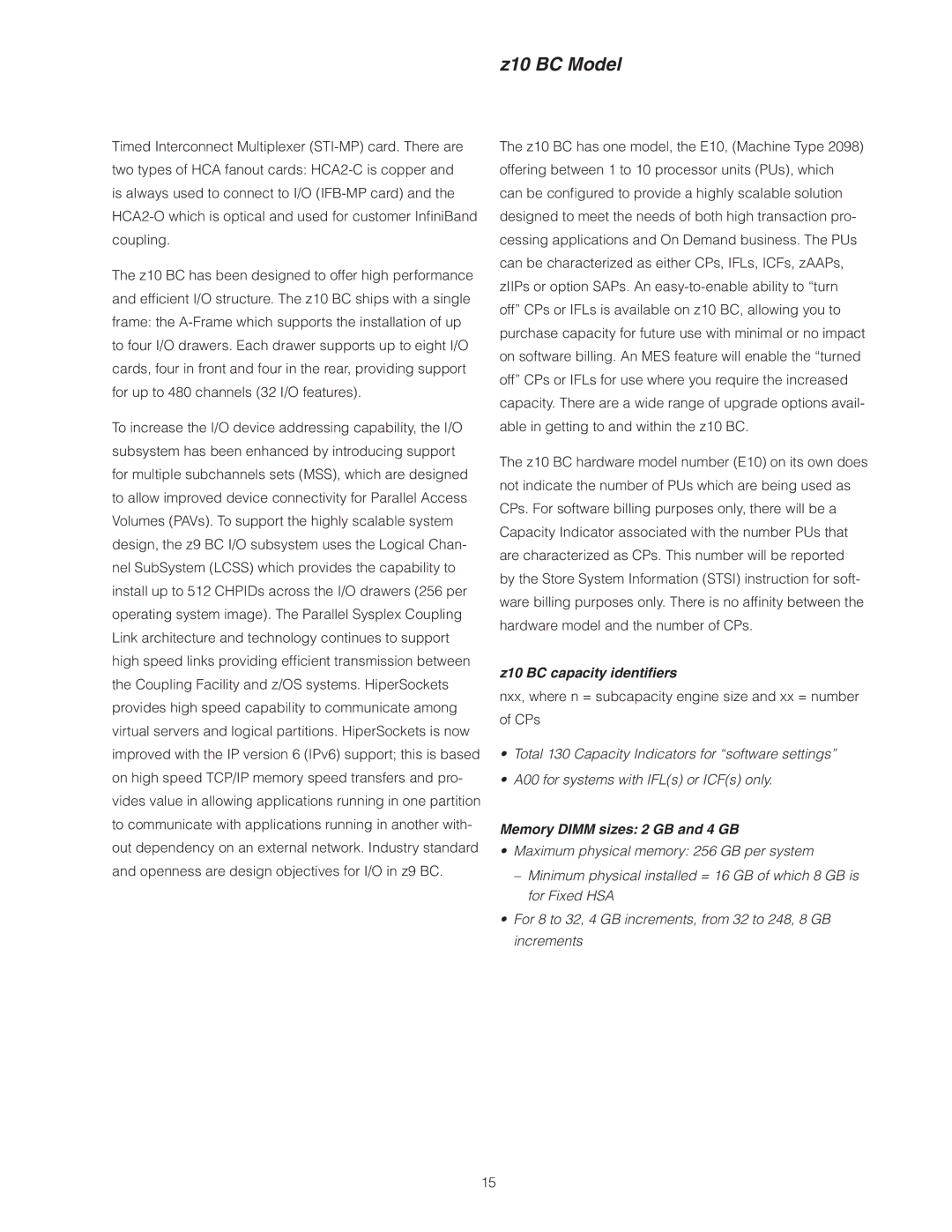z10 BC Model
Timed Interconnect Multiplexer
The z10 BC has been designed to offer high performance and effi cient I/O structure. The z10 BC ships with a single frame: the
To increase the I/O device addressing capability, the I/O subsystem has been enhanced by introducing support for multiple subchannels sets (MSS), which are designed to allow improved device connectivity for Parallel Access Volumes (PAVs). To support the highly scalable system design, the z9 BC I/O subsystem uses the Logical Chan- nel SubSystem (LCSS) which provides the capability to install up to 512 CHPIDs across the I/O drawers (256 per operating system image). The Parallel Sysplex Coupling Link architecture and technology continues to support high speed links providing effi cient transmission between the Coupling Facility and z/OS systems. HiperSockets provides high speed capability to communicate among virtual servers and logical partitions. HiperSockets is now improved with the IP version 6 (IPv6) support; this is based on high speed TCP/IP memory speed transfers and pro- vides value in allowing applications running in one partition to communicate with applications running in another with- out dependency on an external network. Industry standard and openness are design objectives for I/O in z9 BC.
The z10 BC has one model, the E10, (Machine Type 2098) offering between 1 to 10 processor units (PUs), which can be confi gured to provide a highly scalable solution designed to meet the needs of both high transaction pro- cessing applications and On Demand business. The PUs can be characterized as either CPs, IFLs, ICFs, zAAPs, zIIPs or option SAPs. An
The z10 BC hardware model number (E10) on its own does not indicate the number of PUs which are being used as CPs. For software billing purposes only, there will be a Capacity Indicator associated with the number PUs that are characterized as CPs. This number will be reported by the Store System Information (STSI) instruction for soft- ware billing purposes only. There is no affi nity between the hardware model and the number of CPs.
z10 BC capacity identifiers
nxx, where n = subcapacity engine size and xx = number of CPs
•Total 130 Capacity Indicators for “software settings”
•A00 for systems with IFL(s) or ICF(s) only.
Memory DIMM sizes: 2 GB and 4 GB
•Maximum physical memory: 256 GB per system
–Minimum physical installed = 16 GB of which 8 GB is for Fixed HSA
•For 8 to 32, 4 GB increments, from 32 to 248, 8 GB increments
15
